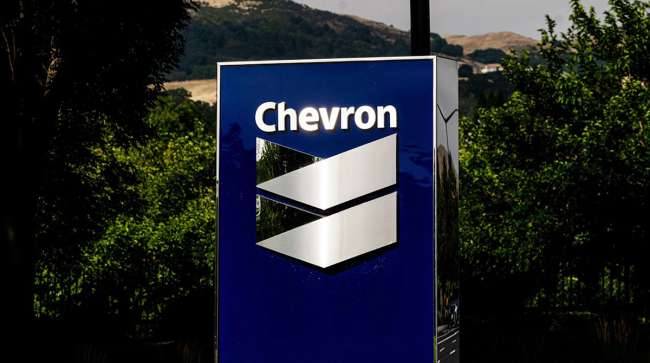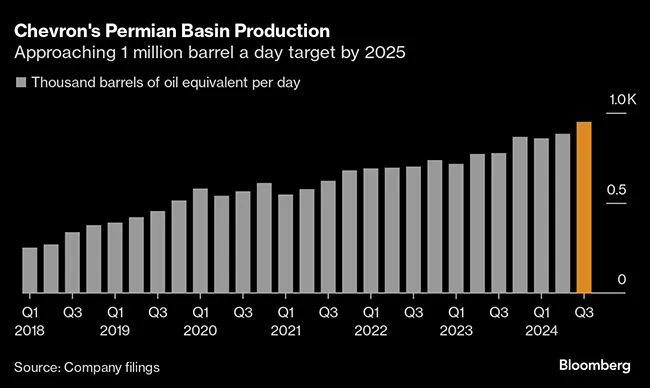Chevron Slows Permian Growth in Hurdle to Trump Oil Plan

[Stay on top of transportation news: Get TTNews in your inbox.]
Chevron Corp. plans to slow production growth in the biggest U.S. oil field next year in the most definitive sign yet that President-elect Donald Trump faces an uphill battle to ramp up American energy output.
Chevron will reduce capital expenditures in the Permian Basin to between $4.5 billion and $5 billion in 2025, a drop of as much as 10%, the company said in a statement Dec. 5. Globally, the oil explorer expects to spend about $17 billion compared to $19 billion this year in the first budget cut since 2021.
“Production growth is reduced in favor of free cash flow,” Chevron said in the statement.
Analysts at Goldman Sachs and Truist Securities raised their price targets for Chevron shares after the company announced its plan. The stock fell 0.5% before the start of regular trading in New York as oil prices slid for a third day.

The Permian region of West Texas and New Mexico has been one of the world’s fastest growing sources of oil over the past decade and now pumps more than 6 million barrels a day, putting it ahead of Iraq, the No. 2 OPEC producer. Independent drillers drove the initial shale revolution but supermajors such as Chevron eventually glommed on to the basin’s potential.
The slowdown will be welcome news for the Organization of Petroleum Exporting Countries and its allies as they struggle to contain a glut of crude from the U.S. and elsewhere that has pushed oil prices down 18% since the end of April. It’s also a reality check for Trump, who has promised to unleash American oil production as part of his “Drill, Baby, Drill,” energy policy that he pledged will cut energy prices in half.
Lori Heino-Royer of Waabi discusses the latest developments, breakthroughs and key industry partnerships in autonomous trucking. Tune in above or by going to RoadSigns.ttnews.com.
West Texas Intermediate fell 0.4% to $68.30 in New York on Dec. 5, brining the 12-month loss to almost 5.6%. U.S. shale is profitable at such prices but absent more robust demand growth most executives prefer to return cash to shareholders and grow through acquisitions rather than spend money ramping up output.
Chevron still plans to increase production from the Permian next year, but growth will significantly decelerate from the 15% annual increase since 2021 as the oil driller nears its million-barrels-a-day target.
CEO Mike Wirth last month indicated production from the basin will stop growing and plateau in the late 2020s to “really open up the free cash flow.” The company’s overall U.S. production is likely to increase until then in part due to projects in the Gulf of Mexico over the next few years.
Want more news? Listen to today's daily briefing above or go here for more info
Analysts and traders surveyed by Bloomberg last month saw the U.S. adding just 251,000 barrels of daily output from the end of this year through 2025, which would be the slowest pace since the pandemic-driven drop in 2020. Exxon Mobil Corp. last week forecast a deceleration in U.S. output over the coming years as companies focus on profits over production. Exxon plans to announce its 2025 budget on Dec. 11.
Chevron expects to spend less than $1 billion on the Tengiz oil field next year as the Kazakhstan expansion project nears completion. The project will increase Chevron’s free cash flow and is a key support to its $17.5 billion-a-year share buyback program despite a series of delays and cost overruns. The $45 billion development is 50% owned by Chevron, while Exxon and state-owned KazMunayGas hold 25% and 20% stakes, respectively.





